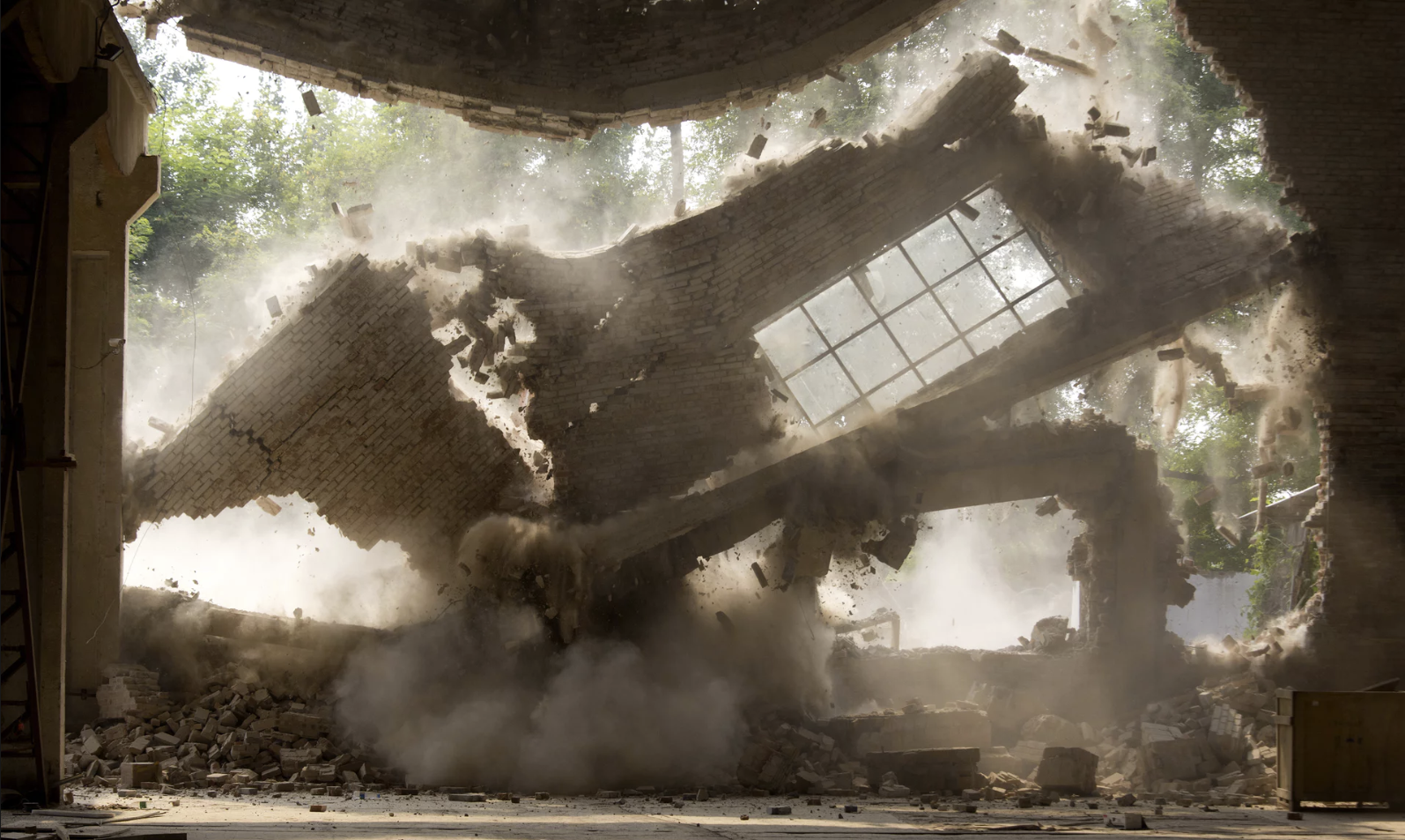
The walls of Chinese artist Ai Weiwei’s studio collapse during demolition. Photograph: Ng Han Guan/AP.
On August 3, Chinese artist Ai Weiwei posted a video on Instagram that showed backhoes beginning to take apart what appeared to be one of his studio buildings in Beijing. “Today, they started to demolish my studio ‘zuo you’ in Beijing with no precaution . . . Farewell,” he wrote on the social media platform. According to the artist, he did not receive any warning or notification from Chinese authorities prior to the demolition. “We were required to move by a certain date, which we have not yet reached. The demolition came as a surprise,” he told NPR.
Ai, a beloved artist internationally, also carries with him a history of dissent and protest. The son of the famed Chinese poet Ai Qing, he first became well known for assisting in the design of “Bird’s Nest” stadium for the 2008 Beijing Olympics. It was that same year, however, that Ai emerged as an advocate for the victims of the earthquake in the Chinese Sichuan province and became a more vocal activist, criticizing the state on a number of issues. “I do have a responsibility because my father’s generation failed,” he said in an independent documentary. “They never successfully made their voice, and I don’t want that to happen to the later generations. I am here now, and I can do something about it, and I will.” Shortly after that interview, police visited Ai’s studio and the government detained him for tax evasion and later confiscated his passport for several years.
AFP reported that the authorities had slated the neighborhood surrounding Ai’s studio for redevelopment. In an interview they conducted with the artist’s assistant, Gan Rang, he mentioned that the team was still in the process of moving out artworks when construction workers began the demolition. “Around the back of the building, lay a cemetery-like collection of different parts from Ai’s various works,” he told AFP, “a ghostly outdoor perspective.”
News of the Week
- Ghanaian artist El Anatsui plans to drape the whole building of the Carnegie Museum of Art with a sculpture composed of thousands of discarded bottle caps strung together with copper wire, according to artnet news. The installation will be a signature part of the 57th Carnegie International (October 13, 2018 – March 25, 2019).
- Next week is the last chance to see Ursula von Rydingsvard: The Contour of Feeling at the Fabric Workshop and Museum in Philadelphia. The exhibition closes next Sunday, August 26.
- From August 10-16, the Brooklyn Academy of Music will be presenting a film series called “Women at Work: Radical Creativity”, featuring films by Ana Mendienta, Deniz Gamze Erguven, and Shirin Neshat, among others.
- A new exhibition at the Nevada Museum of Art entitled Manet to Maya Lin presents artworks by artists such as Vincent van Gogh and Mark Rothko, among others—all drawn from the museum’s permanent collection. It will be on view through September 2.
- In a relevant and timely article for Hyperallergic titled “Acknowledging the Intellectual Labor of Curators in a Museum”, Philadelphia Museum of Art curator Michelle Millar Fisher discussed the lack of recognition for lower-level curators by both museums and the press. Underlining the collaborative nature of curatorial work, she writes: “Apart from offering readers and visitors context at the micro level of their own consumption, correct attribution of authorship is also a matter of the larger historical record. Knowing who has created work (and, indeed, indicating to outside audiences who don’t know that intellectual labor in the museum is usually a team effort) is critical to an understanding of how history and culture is produced.”
The Artist Speaks
Los Angeles-based artist Diana Thater was selected by ICA Boston chief curator Eva Raspini to inaugurate the museum’s new space. She transformed the building with Delphine (1999), an installation that explores the fragility of nature by showing humans interacting with dolphins. In a recent interview with artnet news, she spoke about the project and the difficulties of working with a space still in construction:
“I went through four iterations of the exhibition in order to get it exactly right and to deal with the changing architectural plan for space. Every time a new change came to the building, we had to make changes to our design,” she said. “Those were all produced as 3D computer animations. So the only thing I’d seen, until the recent visit for the opening, was my own animations.”



